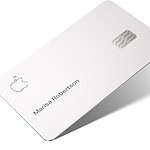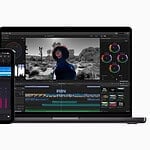Smartphone photography has revolutionized the way we capture and share images. The iPhone, with its advanced camera system, brings professional-grade tools to the tips of our fingers. With just a few taps, users can access a variety of filters from the native Camera and Photos apps. These filters allow the enhancement of images by altering their mood and aesthetics directly from the device.
Understanding how to successfully utilize iPhone camera filters can greatly improve the quality of photos. Filters in the iPhone camera can add warmth, increase contrast, or give a vintage look to an image without requiring extensive photo editing knowledge. For those who seek more control over their photography, third-party apps offer advanced techniques and additional filter options. This amplified control enables users to add a layer of personal style to their smartphone photography.
iPhone Camera Filters: Complete Guide (2025)
iPhone Camera filters let you instantly change the look and mood of your photos and videos.
They’re built into the Camera app and Photos app, so you can apply them while shooting or after you’ve taken the shot.
1️⃣ Understanding iPhone Camera Filters
Apple’s Camera app offers:
- Photo Filters – Color and tone adjustments (e.g., Vivid, Dramatic, Mono).
- Photographic Styles (iPhone 13 and later) – Custom tone and warmth presets applied at capture.
- Live Filters – Applied in real time while shooting.
💡 Difference:
- Filters can be changed after shooting.
- Photographic Styles are baked into the image when captured.
2️⃣ How to Use Filters While Taking a Photo
Step-by-Step:
- Open the Camera app.
- Choose Photo or Portrait mode.
- Tap the filter icon (three overlapping circles) in the top-right or top-center (varies by model).
- Swipe through filter previews:
- Vivid – Bright, vibrant colors.
- Vivid Warm / Cool – Adds warmth or cool tones.
- Dramatic – High contrast.
- Mono / Silvertone / Noir – Black & white variations.
- Tap the shutter to capture with the selected filter.
3️⃣ How to Apply Filters After Taking a Photo
Step-by-Step:
- Open the Photos app.
- Select the photo you want to edit.
- Tap Edit (top-right).
- Tap the filter icon (three circles).
- Swipe through filters to preview.
- Adjust intensity with the slider below.
- Tap Done to save.
4️⃣ Using Filters in Video Mode
- Filters can also be applied in Video and Cinematic modes.
- Process is the same: tap the filter icon before recording.
5️⃣ Pro Tips for Better Results
- Use filters lightly – Overuse can make photos look unnatural.
- Combine with manual adjustments – Adjust exposure, contrast, and warmth after applying a filter.
- Try Portrait Mode + Filters – Creates a professional, stylized portrait.
- Experiment with Photographic Styles – For a consistent personal look across all shots.
6️⃣ Third-Party Filter Apps (For More Options)
If Apple’s built-in filters aren’t enough, try:
- VSCO – Film-style presets.
- Lightroom Mobile – Professional-grade color grading.
- Snapseed – Creative effects and fine-tuning.
- Afterlight – Vintage and artistic looks.
7️⃣ How to Remove a Filter
- In Photos → Edit → Filters, choose Original and tap Done — your photo returns to its unfiltered state.
💡 Quick Example Setups:
- Travel Photos: Vivid Warm for sunny beach shots.
- Urban Photography: Dramatic Cool for cityscapes.
- Classic Look: Noir for timeless black & white portraits.
Key Takeaways
- iPhone camera filters enhance photos directly within native apps.
- The Photos app provides simple, on-the-go photo editing capabilities.
- Advanced photo editing and filter options are available through third-party apps.
Understanding iPhone Camera Filters
The iPhone camera app offers a variety of filters to enhance photos. Users can select filters before taking pictures or apply them to photos from the camera roll later. Adjusting the intensity of these effects is simple and does not permanently alter the original image.
Types of iPhone Camera Filters
Vivid: This filter makes the photo look more lively and intense.
Vivid Warm: Adds warmth by boosting the reds and yellows, ideal for sunny scenes.
Vivid Cool: Cools down the image, emphasizing blues.
Dramatic: Gives the image a darker, more intense look.
Dramatic Warm: Similar to Dramatic but adds a warm hue.
Dramatic Cool: Applies a cooler tone on top of the Dramatic filter’s intensity.
Mono: Converts your photo to black and white with a balanced tone.
Silvertone: Provides a classic monochrome look with a silvery tint.
Noir: Offers a dramatic black and white look with high contrast.
These filters allow for a range of creative expression, from subtle changes to dramatic transformations.
Using Filters in the iPhone Camera App
To apply a filter, open the iPhone Camera app, tap the filter icon, and swipe to choose the desired effect. Once a filter is selected, users can compose their shot and press the shutter button. Live Photos can also be taken with filters applied.
Adjusting Filter Intensity and Other Settings
After taking a photo, users can adjust the filter intensity:
- Open the camera roll.
- Select a photo and tap edit.
- Choose the filter and use the slider to change intensity.
Users have the option to manually adjust contrast, balance, focus, and exposure. For a consistent look across multiple shots, they can preserve settings in the camera settings menu. These editing tools are non-destructive, meaning the original photo remains unaltered.
Enhancing Photos with Third-Party Apps and Advanced Techniques
With a wealth of apps available, iPhone users can achieve professional photo edits beyond the capabilities of the built-in camera filters. From layering textures to adjusting color temperature, advanced techniques help unlock the full potential of iPhone photography.
Popular Third-Party Photo Editing Apps
Adobe Lightroom and VSCO are standout third-party apps that empower iPhone photographers. Users find these apps in the App Store. Adobe Lightroom excels with its detailed editing controls and presets. VSCO offers a selection of aesthetic filters and integrated social features, making it a favorite for those keen to share their work instantly.
Creative Techniques for iPhone Photography
Smartphone photography is not just about the click but also the post-processing magic. Users add drama with black and white filters or experiment with watercolor mono effects for an artistic touch. Advanced techniques like selectively applying filters or combining the comic book and aged film filters yield photos ready to amaze. Textures provide depth, while playing with vibrant settings can mimic DSLR quality.
Sharing and Using Photos on Social Media
Social media platforms are integral for photographers to display their work. After editing, iPhone users easily share photos with integrated sharing options. Photos enhanced with rich filters tend to stand out, and the right use of fade can set the mood. For portraits, iPhone’s portrait mode coupled with careful filter use draws focus to the subject, important for platforms where visuals speak louder than words.







